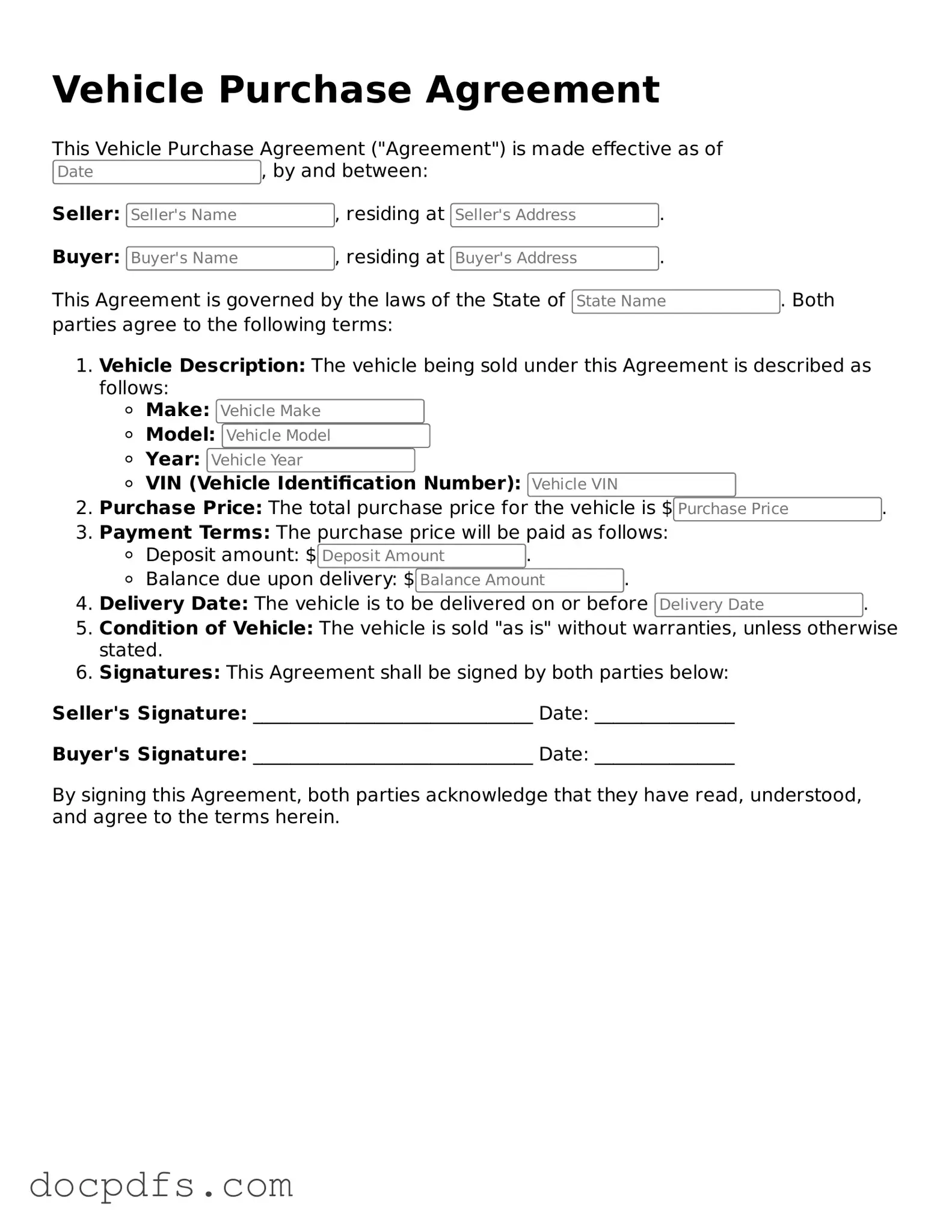Legal Vehicle Purchase Agreement Document
A Vehicle Purchase Agreement is a legal document that outlines the terms and conditions of a sale between a buyer and a seller for a vehicle. This agreement serves to protect both parties by clearly defining the details of the transaction, including the price, payment terms, and any warranties. Understanding this form is essential for anyone looking to buy or sell a vehicle to ensure a smooth and transparent process.
Open Vehicle Purchase Agreement Editor Now
